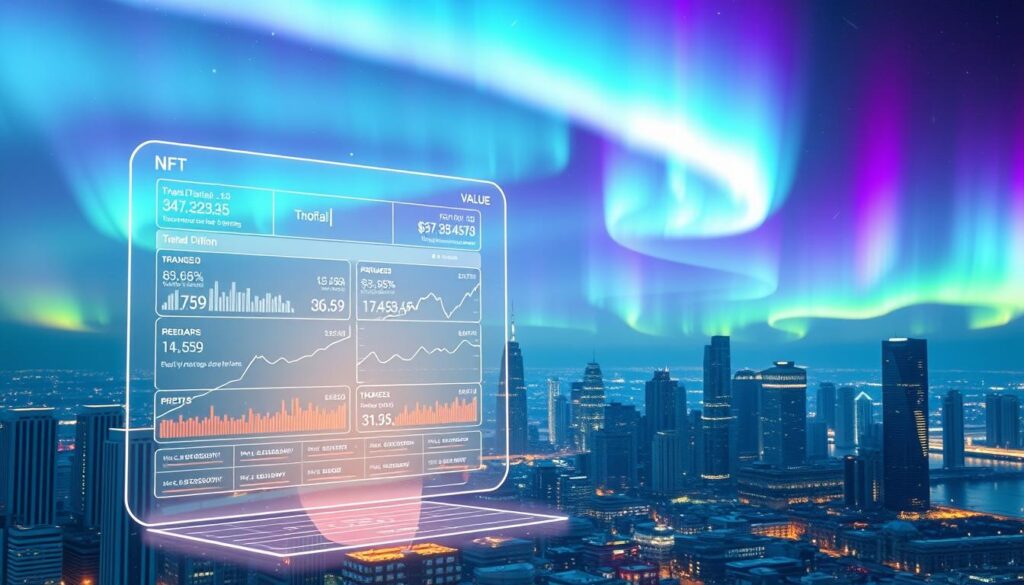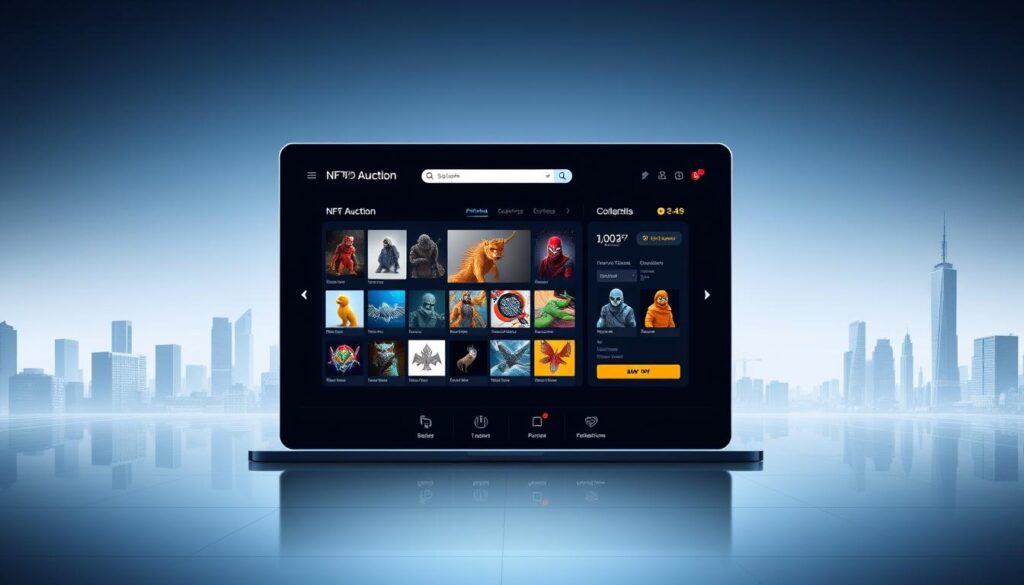Now Reading: NFT Certificate Authenticity Digital Proof: Ensuring Ownership
- 01
NFT Certificate Authenticity Digital Proof: Ensuring Ownership
NFT Certificate Authenticity Digital Proof: Ensuring Ownership
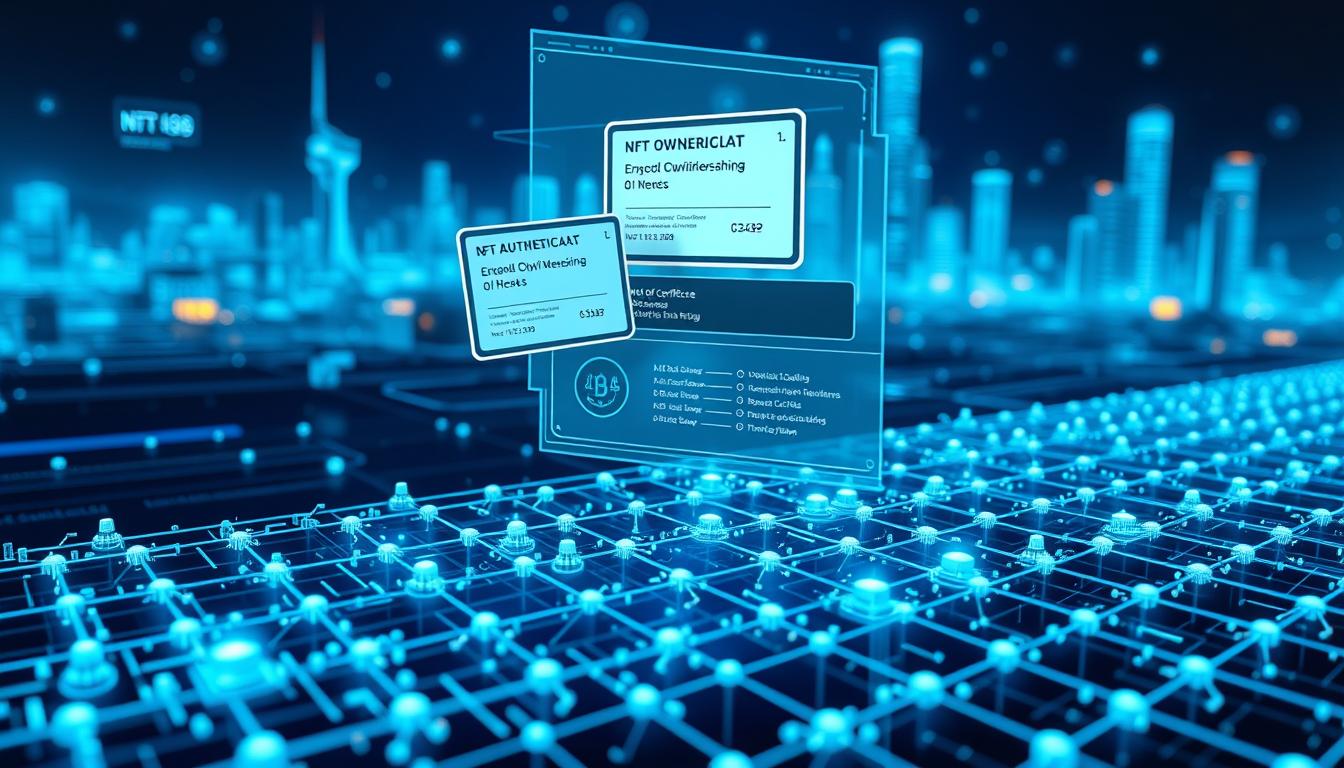
In today’s global marketplace, establishing trust is more critical than ever. Counterfeit goods present a monumental challenge, eroding consumer confidence across countless sectors. This creates a pressing need for reliable methods to confirm an item’s origin and rightful owner.
Innovative technology now offers a revolutionary solution to these authentication hurdles. By creating unique, non-replicable tokens, it becomes possible to generate a tamper-evident record of possession. This applies to both physical objects and purely virtual items.
This system leverages a powerful infrastructure known as blockchain. The records it creates are permanent and cannot be changed or forged. This fundamentally transforms how businesses and individuals confirm the legitimacy of their assets.
Each token acts as a one-of-a-kind record permanently stored on a distributed ledger. This makes confirmation of ownership completely transparent. Anyone can independently verify the details, creating a new standard for trust.
This article will explore the mechanics of these verification systems. We will examine their practical uses across different industries and discuss implementation strategies. The significant advantages that this ledger-based approach brings to authenticity challenges will be a key focus.
Key Takeaways
- Counterfeit goods represent a significant global issue, undermining trust in various markets.
- New technological solutions provide a robust way to tackle authentication problems.
- Blockchain infrastructure creates unchangeable records that prevent forgery.
- Each unique token serves as a transparent and verifiable record of possession.
- This technology benefits luxury brands, artists, and collectors by offering reliable verification.
- Traditional paper-based systems are often insufficient for modern needs.
- Decentralised systems provide enhanced security over centralised databases.
Overview of NFT Certificate Authenticity Digital Proof
These systems combine two revolutionary technologies to create unprecedented security. They transform how we establish ownership and verify legitimacy.
Defining NFTs and Digital Certificates
Non-fungible tokens represent unique digital assets tied to specific items. Unlike interchangeable cryptocurrencies, each token possesses distinct characteristics.
They function as modern replacements for traditional paper documents. Every token links permanently to art, collectibles, or luxury goods.
This creates a permanent record that travels with the item throughout its lifecycle. The system eliminates vulnerabilities associated with physical documents.
The Role of Blockchain in Ensuring Authenticity
Blockchain technology serves as the foundation for these verification systems. It operates as a decentralised ledger maintained by multiple network nodes.
Every transaction receives validation across all participants. This distributed approach creates tamper-resistant records.
Established protocols like Ethereum’s ERC-721 provide the technical framework. They enforce crucial properties including:
- Uniqueness for each created token
- Clear ownership tracking mechanisms
- Secure transferability between parties
The immutable nature of blockchain record-keeping means information cannot be altered once recorded. This creates a vendor-agnostic verification system accessible to anyone.
How NFT Certificate Authenticity Digital Proof Works
The mechanism behind these ownership verification systems unfolds through a clear, multi-stage procedure. It transforms a physical object or unique digital creation into a securely tracked asset on a distributed ledger.
Minting and Linking to Physical/Digital Assets
This journey begins with ‘minting’. This is the process of creating a unique token on a chosen blockchain platform like Ethereum or Binance Smart Chain. Each platform offers different features and costs for this creation.
During minting, comprehensive details about the asset are permanently linked to the token. This information can include photographs, serial numbers, manufacturing dates, and provenance history. This creates an unbreakable bond between the item and its digital record.

Manufacturers often generate these tokens at the very point of a product’s creation. This ensures every item has its own unique digital identity from the very start. The newly created token is then stored securely in a digital wallet, where ownership is proven.
Step-by-Step Guide to Verification
Verifying an item’s legitimacy is designed to be straightforward for anyone. A potential buyer can simply scan a QR code attached to the product or manually search for the token’s unique identifier.
This action pulls up the permanent record on the blockchain. The verifier then checks that the details listed—such as descriptions and images—perfectly match the physical item in front of them.
Finally, they confirm the current ownership status. The transaction history shows a clear chain of custody from the original creator to the current seller. This transparent process provides undeniable proof of legitimate possession.
Benefits of NFT Certificate Authenticity Digital Proof
The shift towards blockchain-based verification brings significant improvements over traditional methods. This system offers a robust framework that benefits both businesses and consumers.
Enhanced Security and Immutable Records
The core strength lies in its security. The blockchain ledger creates an immutable record of ownership. This information cannot be altered or deleted once confirmed by the network.
This makes counterfeiting virtually impossible. Each genuine item has a unique token that serves as its permanent digital identity.

Increased Consumer Trust and Brand Integrity
This transparency directly builds consumer trust. Buyers can instantly verify a product’s history and legitimacy themselves. They are no longer reliant on a seller’s word or fragile paper documents.
For brands, this demonstrates a commitment to quality and transparency. It strengthens brand integrity and fosters lasting customer loyalty in competitive markets.
The token itself can also carry added value. It can unlock exclusive content or rewards, transforming a simple proof of purchase into a dynamic brand collectible.
Applications Across Sectors
The practical implementation of token-based verification systems spans numerous industries. This technology offers versatile solutions for confirming the legitimacy of both tangible objects and purely virtual creations.
Luxury Goods, Real Estate and Collectibles
High-end brands are leading the charge in adopting this technology. The Aura Blockchain Consortium, formed by giants like Louis Vuitton and Cartier, focuses on creating a unified approach to product verification.
Watchmaker Vacheron Constantin issues a unique digital passport for each timepiece at production. This provides a permanent, unchangeable record of its history. Louis Vuitton has also patented a platform for customers to verify their items.
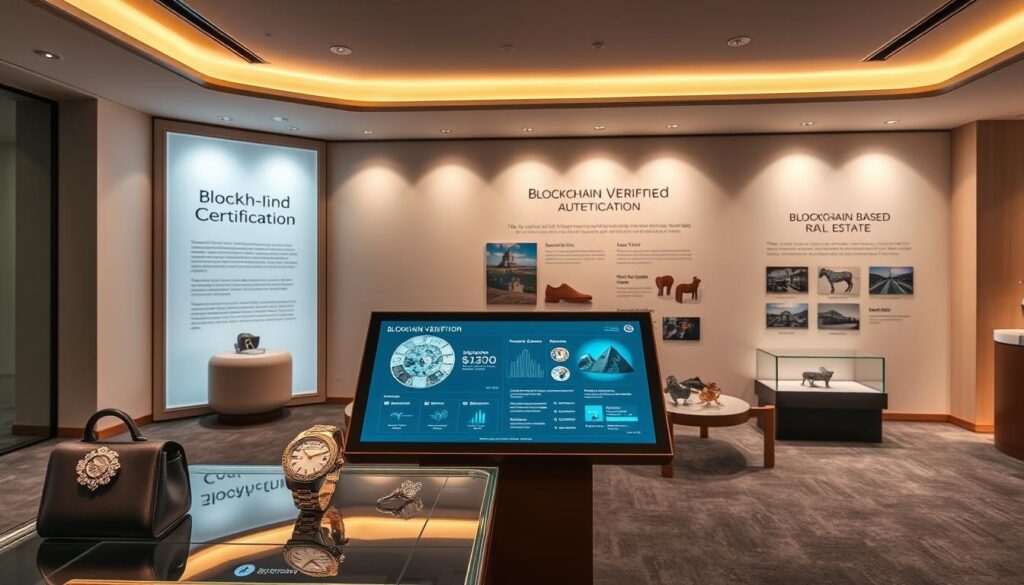
The concept extends to ‘phygital’ products. Lamborghini launched an exclusive carbon-fibre artwork paired with a digital twin. This blends physical ownership with digital collectability.
In real estate, property deeds can be tokenised. This streamlines transfers and creates a transparent chain of ownership for valuable assets. The collectibles market also benefits greatly.
Trading cards and rare sneakers gain verified scarcity. Their blockchain records facilitate trusted transactions on the secondary market.
Digital Art and Unique Digital Assets
The art world was an early adopter of this technology. Provenance and originality are paramount for artists and collectors.
A landmark example is Beeple’s digital artwork “Everydays: The First 5000 Days”. It sold for $69 million at Christie’s auction house. The associated token served as undeniable proof of originality and ownership.
This system also revolutionises event ticketing. Tickets become unique tokens that eliminate counterfeits. They can also transform into lasting digital memorabilia with embedded exclusive content.
| Sector | Primary Use Case | Key Benefit | Example |
|---|---|---|---|
| Luxury Goods | Product Authentication | Combats Counterfeiting | Vacheron Constantin Watches |
| Real Estate | Title Deed Management | Streamlines Transfers | Tokenised Property Records |
| Digital Art | Provenance Tracking | Establishes Scarcity | Beeple’s $69M Artwork |
| Events & Ticketing | Anti-Counterfeit Tickets | Creates Digital Collectibles | NFT-Based Event Access |
Implementing Digital Proof with NFTs
Adopting token-based verification requires a systematic approach to implementation. Businesses must carefully plan each phase to ensure smooth integration with existing operations.
Setting Up Digital Wallets and Minting Tokens
The first step involves selecting a suitable blockchain platform. Companies should consider factors like transaction costs and network security when making this choice.
Once a platform is chosen, the minting process begins. This involves creating unique tokens linked to specific products. Each token contains detailed asset information that establishes the initial ownership record.
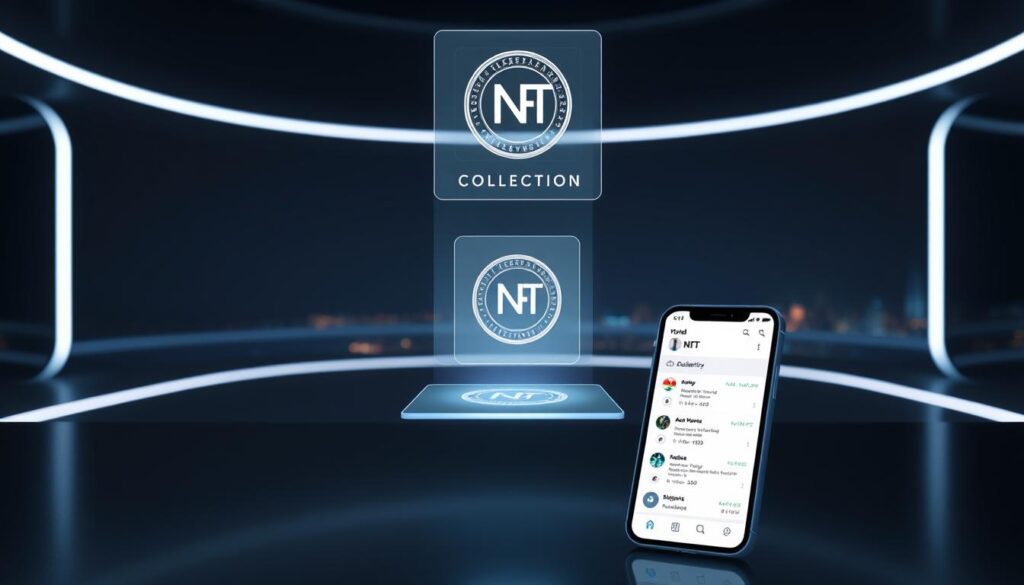
Businesses and customers need secure digital wallets to store these tokens. The wallet infrastructure manages transfers throughout the product lifecycle. Platforms like Mintology offer no-code solutions that simplify this technical process.
Integrating Blockchain Verification Processes
Integration requires connecting the verification system with existing business operations. This includes point-of-sale systems and customer relationship platforms.
At the point of sale, tokens transfer to buyers who receive QR codes or links to claim their ownership records. The minting process establishes a permanent blockchain record that proves legitimate purchase.
Customer education is crucial for successful adoption. Businesses must guide buyers through claiming, storing, and using their verification tokens. Clear processes for wallet recovery and technical support ensure the system remains reliable for all users.
Challenges and Considerations
Implementing this new verification model presents brands with unique operational challenges that demand strategic planning. Companies must carefully evaluate both technical and business implications before adoption.
Addressing Market Manipulation and Fraud Risks
Public blockchain transparency creates competitive exposure risks. Sales data becomes visible to competitors, revealing product performance and geographic distribution patterns.
This visibility can trigger speculative buying behaviours. Collectors might purchase items based on market trends rather than genuine interest.
Sophisticated fraud presents another significant concern. Counterfeiters can create fake physical replicas paired with fraudulent tokens.
Digital wallet security remains crucial. Theft or hacking could result in permanent token loss, diminishing product value.
Legal Recognition and Regulatory Compliance
Legal acceptance varies significantly across jurisdictions. Regulations continue evolving, creating compliance complexities for global brands.
Consumer understanding presents adoption barriers. Technical concepts like digital wallets and blockchain transactions confuse many potential users.
Privacy considerations emerge from transaction pattern analysis. Purchasing behaviours could be inferred when wallet addresses link to real identities.
| Challenge Area | Primary Risk | Mitigation Approach |
|---|---|---|
| Data Transparency | Competitive intelligence exposure | Private blockchain implementations |
| Market Dynamics | Speculative buying distortions | Controlled information release |
| Security Vulnerabilities | Digital wallet compromise | Enhanced security protocols |
| User Adoption | Technical complexity barriers | Simplified interface design |
| Legal Framework | Regulatory compliance uncertainty | Specialised legal consultation |
Implementation costs and timing require careful budgeting. Minting tokens and maintaining infrastructure represent significant investments for businesses.
Conclusion
The evolution of ownership verification represents a fundamental shift in how we establish trust and provenance. Blockchain technology provides unprecedented security through immutable records that cannot be altered or forged.
These systems offer practical advantages across multiple sectors. From luxury goods to real estate, businesses gain enhanced protection against counterfeiting while consumers enjoy transparent verification processes.
While implementation requires careful consideration of technical and regulatory factors, the core value proposition remains compelling. As the technology matures, wider adoption will likely transform how we manage valuable assets.
Organisations embracing these verification methods position themselves at the forefront of digital innovation. They build customer confidence while protecting their brand integrity in an increasingly complex marketplace.
FAQ
What exactly is an NFT-based authenticity certificate?
It is a unique digital token, recorded on a blockchain, that serves as an unforgeable proof of ownership for a specific item. This technology links a physical product or digital asset to an immutable record, providing a secure and transparent way to verify its provenance.
How does blockchain technology guarantee the authenticity of these certificates?
Blockchain creates a decentralised and permanent ledger. Every transaction, including the creation and transfer of the ownership record, is timestamped and cannot be altered. This process eliminates the risk of counterfeiting by providing a single source of truth.
Can I use this for physical objects like a luxury handbag or a property deed?
Absolutely. Brands like LVMH are already using NFTs to authenticate luxury goods. In real estate, a digital token can represent ownership of a property, with all sales and legal details recorded on the blockchain for secure and efficient transactions.
What is the process for verifying an item’s authenticity using this system?
You typically scan a QR code or use a dedicated app linked to the item. This action connects to the blockchain, pulling up the token’s history. You can instantly see the entire ownership chain and confirm the product is genuine.
What are the main benefits for consumers and brands?
For consumers, it builds immense trust by eliminating doubt about a product’s origin. For brands, it protects their integrity and the value of their assets by combatting fraud. The immutable record also simplifies processes like warranty claims and resale.
Are there any risks or challenges associated with this technology?
While highly secure, the market is still evolving. Challenges include ensuring widespread legal recognition and navigating different regulatory compliance standards across various sectors. Users must also securely manage their digital wallets to prevent unauthorised access.


